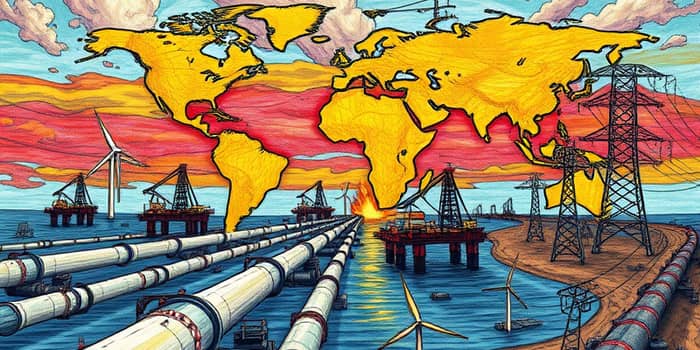
As geopolitical conflicts flare across multiple regions, energy markets are experiencing unprecedented volatility. Consumers and policymakers alike are seeking clarity amid surging costs and shifting supply chains.
Natural gas prices in the United States have more than doubled since 2024, with the Henry Hub spot price reaching $3.44/MMBtu in April 2025 and forecasts projecting averages near $4.00/MMBtu in 2025 and $4.90/MMBtu in 2026. Such rapid increases reflect tight supply conditions and heightened demand from both domestic and export markets.
Meanwhile, global oil demand grew only 0.8% in 2024, slowing from previous years, while natural gas demand surged by 2.7%. Renewables continue to expand quickly, representing 38% of global energy supply growth in 2024.
These shifts mark a clear change in energy market dynamics, driven by both short-term disruptions and long-term structural trends.
Rising energy prices have become a significant driver of global inflation, contributing to elevated consumer costs and squeezing household budgets. Advanced economies project inflation rates to remain above pre-pandemic levels well into 2025.
Vulnerable regions face the brunt of these pressures, with energy poverty and economic slowdowns impacting millions. Governments are challenged to balance fiscal support with maintaining incentives for cleaner energy transitions.
Major conflicts—from the Russia-Ukraine war to unrest in the Middle East—have directly disrupted oil and gas flows. Russia’s reduced gas deliveries to Europe led to increasing competition for LNG exports, pushing prices higher across Asia and North America.
Sanctions on Russian oil and insurance risks have forced buyers to find alternative suppliers, shifting trade patterns and fueling uncertainty. OPEC+ adjustments, meanwhile, have created further pricing volatility amid weakening global demand.
Global energy demand grew by 2.2% in 2024, driven primarily by emerging economies. Yet oil’s share of consumption dipped below 30% for the first time, while renewable capacity climbed sharply.
Surging electric vehicle adoption rates—with one in five new cars sold in 2024 being electric—are reshaping oil demand forecasts. At the same time, coal generation is set to rise 6% in the U.S. power sector, while solar output jumps by 34%.
Efficiency improvements, digitalization, and extreme weather events have elevated electricity consumption, with data centers and cooling needs leading the surge.
China’s energy demand growth slowed to under 3% in 2024, while India posted the second-largest absolute increase globally. Both nations are securing critical minerals and diversifying energy sources amid US-China trade tensions.
Europe’s drive to replace Russian gas has intensified competition for LNG, benefiting U.S. exporters but keeping prices elevated. In the U.S., natural gas use for power generation is expected to decline, offset by strong growth in coal and renewables.
To mitigate future shocks, governments and companies are accelerating investments in renewable energy, energy storage, and strategic reserves. Enhanced grid modernization and diversified import routes aim to reduce reliance on single suppliers.
Long lead times for new LNG terminals—often five to seven years—underscore the importance of planning ahead. Strategic partnerships across regions are emerging, with joint ventures in solar, wind, and battery storage projects.
On the policy front, measures range from carbon pricing to subsidies for heat pumps and rooftop solar installations. These steps not only address short-term supply risks but also chart a path toward sustainable energy systems.
Amid uncertainty, stakeholders can take proactive measures to manage costs and risks:
By staying informed and diversifying energy strategies, organizations and households can weather price swings and contribute to long-term stability.
As geopolitical tensions ebb and flow, the resilience of global energy systems will hinge on collaboration, innovation, and forward-looking policies. While challenges persist, the accelerating shift toward cleaner, more flexible energy sources offers a pathway to greater security and sustainable growth.
References













